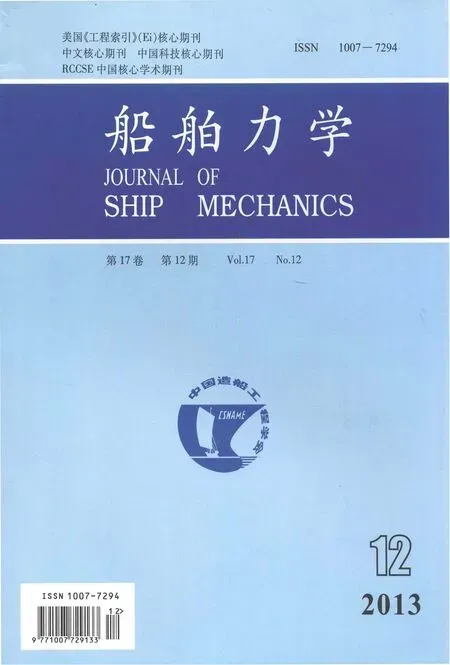Study of Effective Factors for the Vibration of Rotating Functionally Graded Cylindrical Shells
LIANG Bin,XIANG Shuang,LI Rong,ZHANG Wei,XU Hong-yu
(Civil Engineering School,Henan University of Science and Technology,Luoyang 471023,China)
1 Introduction
The material properties of functionally graded(FG)cylindrical shells are graded along the thickness direction.Since 1980’s,FG cylindrical shells have been widely applied in aerospace,shipbuilding and machinery,etc.Rotating FG cylindrical shells is one of key components for high-speed centrifuge,aero engines and construction machines,etc.Over the years,many researchers devoted to their studies of complex vibration and fatigue fracture.Zhang[1]studied the effect of length/radius ratio,thickness/radius ratio,rotating speeds,etc on the natural frequencies of rotating laminated composite cylindrical shells with the wave propagation approach.The influence of boundary condition on natural frequency of a thin rotating cylindrical shell was presented by Li[2]using the GDQ method.Previously,the GDQ method was used to research the stability,vibration and buckling of plates.The DSC method was first used to investigate the free vibration of rotating cylindrical shell against boundary conditions by Ömer Civalek[3].Xiang[4]studied the effect of power exponent,wave number of x and θ,thickness/radius ratio,etc on the natural frequencies of rotating FG cylindrical shells under simply supported(S-S)boundary condition.Four common theories of thin shells,such as Donnell’s,Flügge’s,Love’s and Sanders’,were used to study the vibration of rotating laminated composite cylindrical shells.The influence of boundary conditions on the free vibrations of rotating truncated circular multi-layered conical shells was published by Li[6].The vibration characteristic of thick rotating laminated composite cylindrical shells was performed by Lam[7]based on the first order shear deformation shell theory.Liu[8]used Love’s first approximation theory and Hamilton principle to analyze the vibration characteristics of rotating thin cylindrical shells with various boundary conditions.Pradhan[9]presented the influences of vibration characteristics on functionally graded cylindrical shells under different boundary conditions.
Based on Love’s first approximation theory,the eigenfrequency equation of rotating FG cylindrical shell is derived.The effects of volume fraction,axial wave number,circumferential wave number,constituent materials,geometric parameters and boundary conditions on natural frequencies are investigated by examples,and then the forces under S-S boundary condition are analyzed in this paper.
2 Model
Consider a rotating cylindrical shell with radius R,length L,thickness h,and rotating speeds Ω(rad/s),see Fig.1.The reference surface of the shell is taken to be at its middle surface where an orthogonal co-ordinate system)is located.The displacements of the shell are defined by u,v,w in the x,θ,z directions,respectively.
The material characteristics of a FG cylindrical shell can be determined by material parameters and volume fraction.The function of volume fraction can be written as


Fig.1 Geometry of a FG rotating cylindrical shell
where N is the power-law exponent,0≤N≤∞.The definitions of effective mechanical properties such as Young’s modulus E,Poisson’s ratio μ and mass density ρ,which are made up of inner and outer materials,are expressed as

3 Theoretical formulation
By using Love’s first approximation theory,differential equations for a rotating cylindrical shell can be defined as:

where


The force and moment resultants,that is,the membrane force and the flexural force for a thin cyli drical shell can be defined as

The relationship between the force and the strain can be given as

The reduced stiffness Qij(i, j=1,2,6)are defined as

By using Love’s first approximation theory,the strain components are expressed as

where e1,e2and γ are the reference surface strains,k1,k2and τ are the reference surface curvatures.

Substituting Eqs.(9)-(11)into Eq.(8),and then bring the results into Eq.(7),the force and moment resultants can be obtained as

where Aij,Bijand Dij(i, j=1,2,6)are the extensional,coupling and bending stiffness,respectively,defined as

4 Solution method
The vibration mode of a shell with different boundary conditions can be expressed by the axial beam function and the trigonometric functions as

where u,v,w are the axial displacement,radial displacement and circumferential displacement,respectively.A,B,C are the wave amplitudes,n is the circumferential wave number,and ω is the natural frequency.

The axial beam function φ(x)[10]can be defined as

where bi(i=1,2,3,4)and λ are associated with boundary conditions.
The geometric boundary conditions can be expressed mathematically as Clamped boundary condition:

Free boundary condition:

Simply supported boundary condition:

By substituting the displacement equation and Eq.(17)into Eqs.(3)and(5),the eigenfrequency equation can be obtained as

Set the determinant of the characteristic matrix[Cij]to zero,the equation of natural frequencies can be obtained as

where αi(i=0,1,2,3)are the coefficients.Three positive roots can be obtained by solving Eq.(26).The lowest of the three positive roots represents the forward natural frequencies of the cylindrical shell.The backward natural frequency can be obtained accordingly when the shell rotates in the reverse direction.
The coefficients of the characteristic matrix under S-S boundary condition are listed in Appendix.
5 Numerical results and discussion
To verify the correctness of analysis,the comparison of frequency parameters for a nonrotating FG cylindrical shell is presented in Tab.1.The outer surface material of the shell is Stainless steel,the inner surface material is Zirconia,Some parameters are selected as:N=30,L/R=20,h/R=0.01,E=1.68×1011N/m2,μ=0.3,ρ=5 700 kg/m3,m=1.
Tab.1 Comparison of frequency parameters for a non-rotating functionally graded cylindrical shell f*=ωR(L/R=20,h/R=0.01,m=1,N=30)

Tab.1 Comparison of frequency parameters for a non-rotating functionally graded cylindrical shell f*=ωR(L/R=20,h/R=0.01,m=1,N=30)
n Loy[11] Present n Loy[11] Present 12345 0.016 101 0.009 378 0.022 103 0.042 094 0.068 007 0.016 007 0.009 099 0.021 957 0.042 003 0.067 940 67891 0 0.099 729 0.137 238 0.180 527 0.229 593 0.284 435 0.099 675 0.137 192 0.180 486 0.229 556 0.284 400
Material characteristics of the shell in this paper are listed in Tab.2 (T=300 K).

Tab.2 Material characteristics
The effects of various factors on the natural frequencies of rotating FG cylindrical shell under S-S boundary condition are investigated,with Stainless steel outside and Zirconia inside,see Tabs.3-6.The frequencies with different constituent materials for FG rotating cylindrical shell are presented in Tab.7.As shown in the tables,the first line is forward wave,the second line is backward wave.Tab.3 shows the natural frequencies for FG rotating cylindrical shell against volume fraction under certain axial wave number m.The natural frequencies increased with the increasing of volume fraction between NSS=0 and NZ=0.The columns NSSand NZshow the natural frequencies for a Stainless steel cylindrical shell and a Zirconia cylindrical shell.Moreover,the natural frequencies first decreased and then increased with circumferential wave number,and the minimum frequency appeared in n=2.
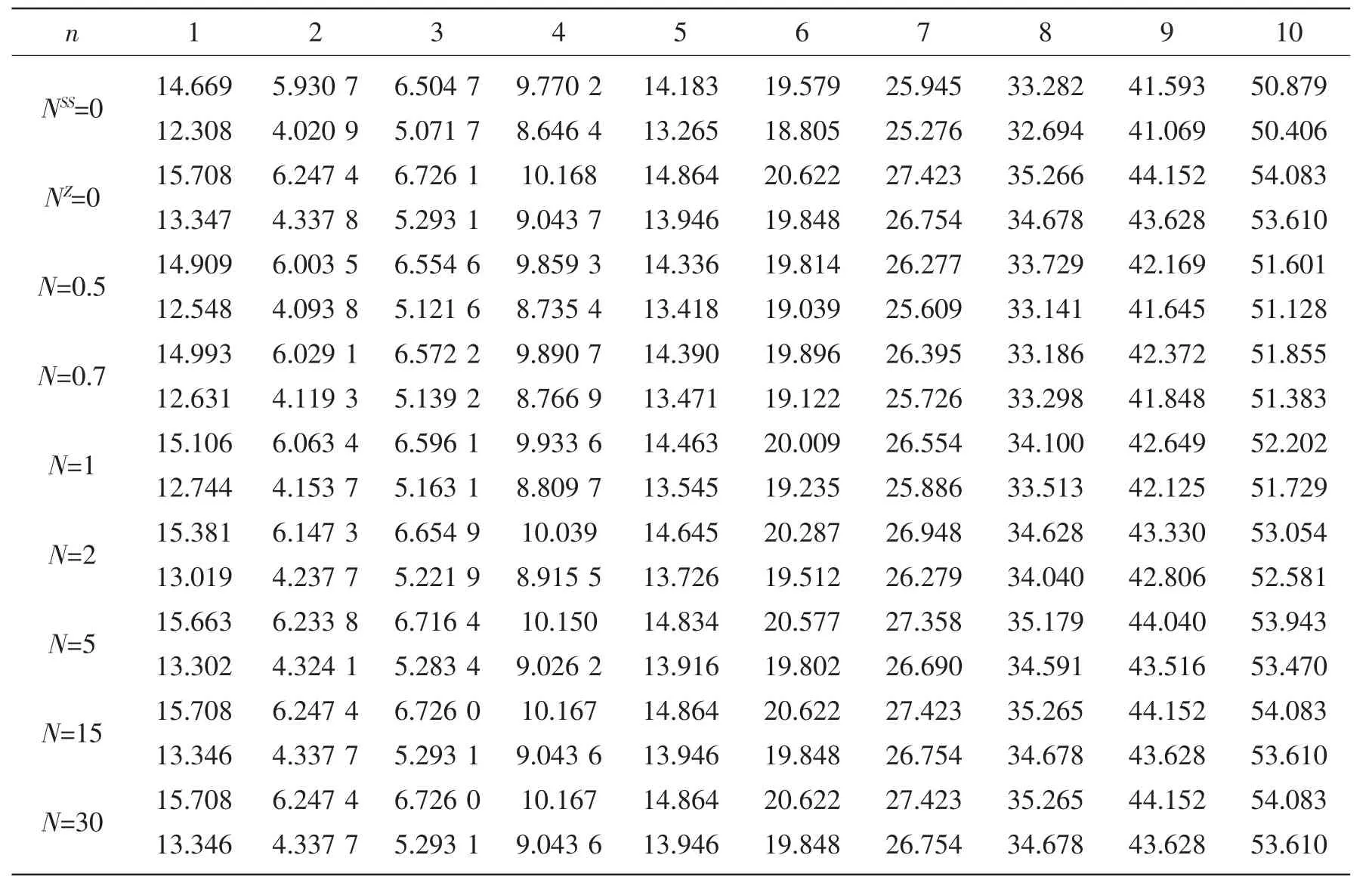
Tab.3 Natural frequencies(Hz)for FG rotating cylindrical shell against volume fraction under certain axial wave number(m=1,h/R=0.002,L/R=20,Ω=10 rad/s )
The natural frequencies for a FG rotating cylindrical shell against volume fraction under certain circumferential wave number n are shown in Tab.4.Besides similar to Tab.3,the natu-ral frequencies increased gradually with the increasing axial wave number m.Comparing with circumferential wave number n,the axial wave number m has more effect on the natural frequencies.
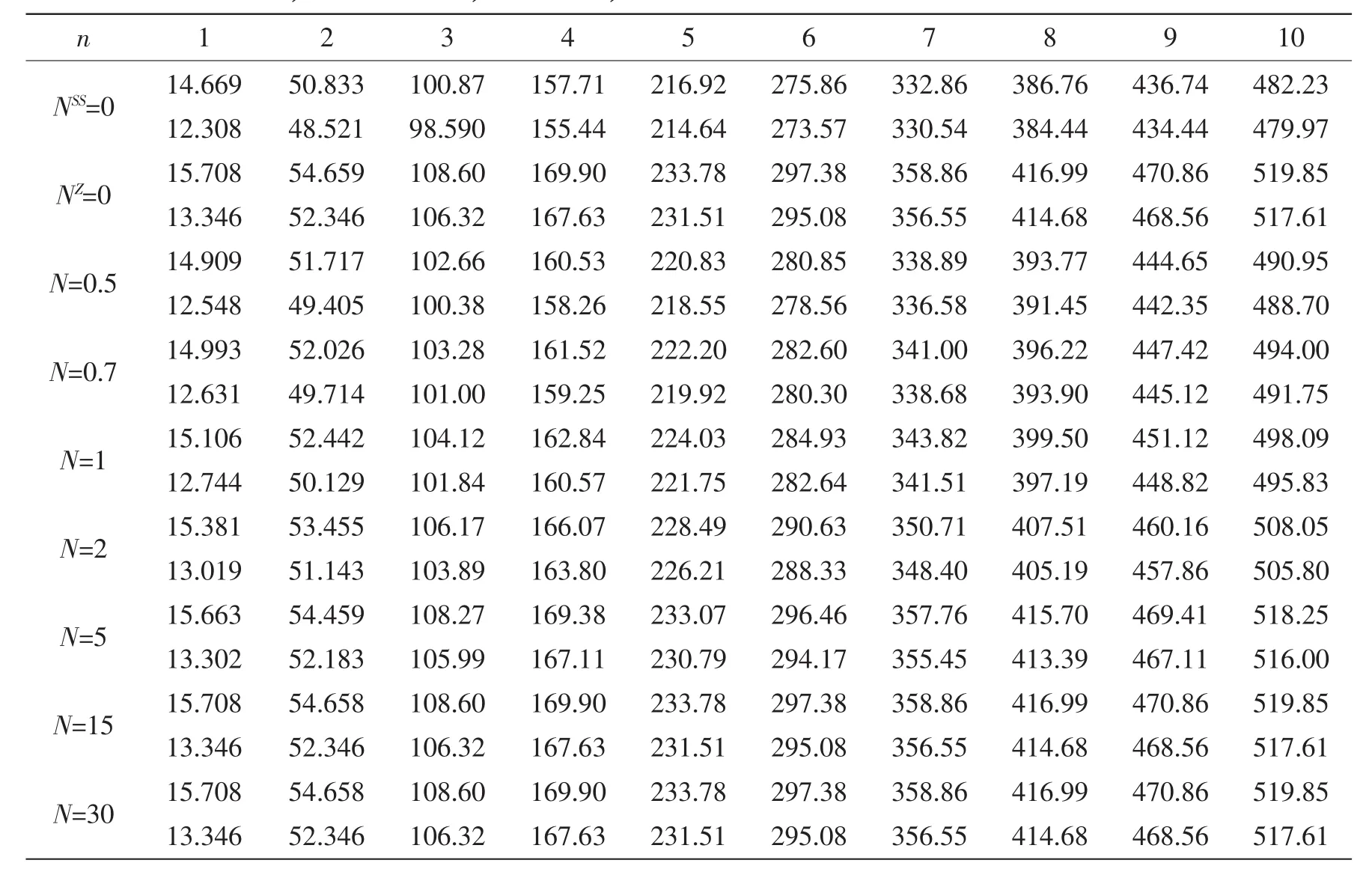
Tab.4 Natural frequencies(Hz)for FG rotating cylindrical shell against volume fraction under certain circumferential wave number(n=1,h/R=0.002,L/R=20,Ω=10 rad/s )
Tab.5 presents the natural frequencies for a FG rotating cylindrical shell against L/R ratios.The natural frequencies reduced with the increasing of L/R ratios with circumferential wave number n.However,the variations of the natural frequencies with certain L/R ratios are different.For 0.2≤L/R≤2,the natural frequencies reduced with the increasing of circumferential wave number n.For L/R≥5,the natural frequencies first decreased and then increased.The circumferential wave number n corresponding to its minimum frequency and is coming closer to n=1.For L/R≥100,the natural frequencies increased monotonically.

Tab.5 Natural frequencies(Hz)for FG rotating cylindrical shell against L/R ratios(m=2,N=1,h/R=0.002,Ω=10 rad/s )
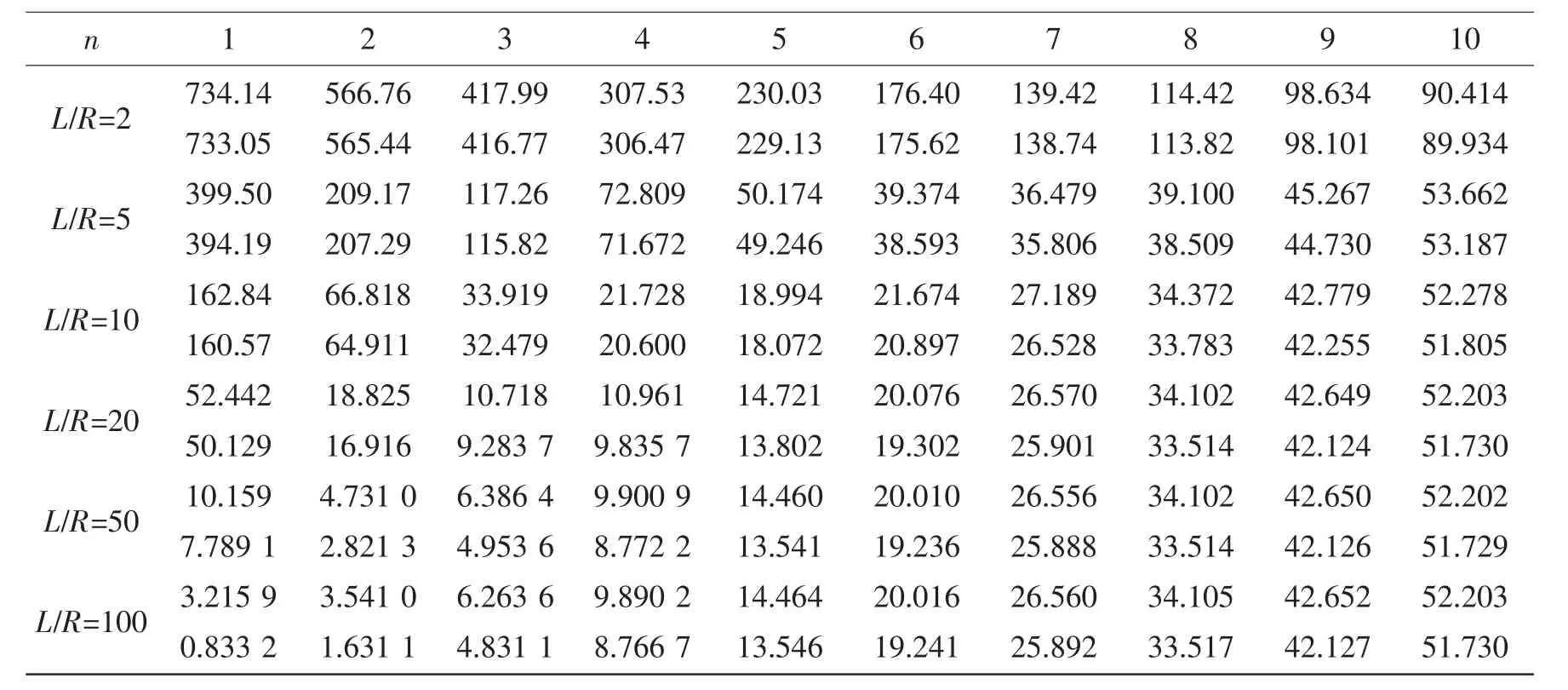
Continue 5
Tab.6 shows the natural frequencies for a FG rotating cylindrical shell against h/R ratios.The frequencies are increased with the increasing of h/R ratios,but at n=1.The natural frequencies first decreased and then increased with the increasing of circumferential wave number n.For h/R=0.001,the minimum frequency appeared in n=4.For 0.005≤h/R≤0.007,the minimum frequency appeared in n=3,and when h/R≥0.01,the result is n=2.
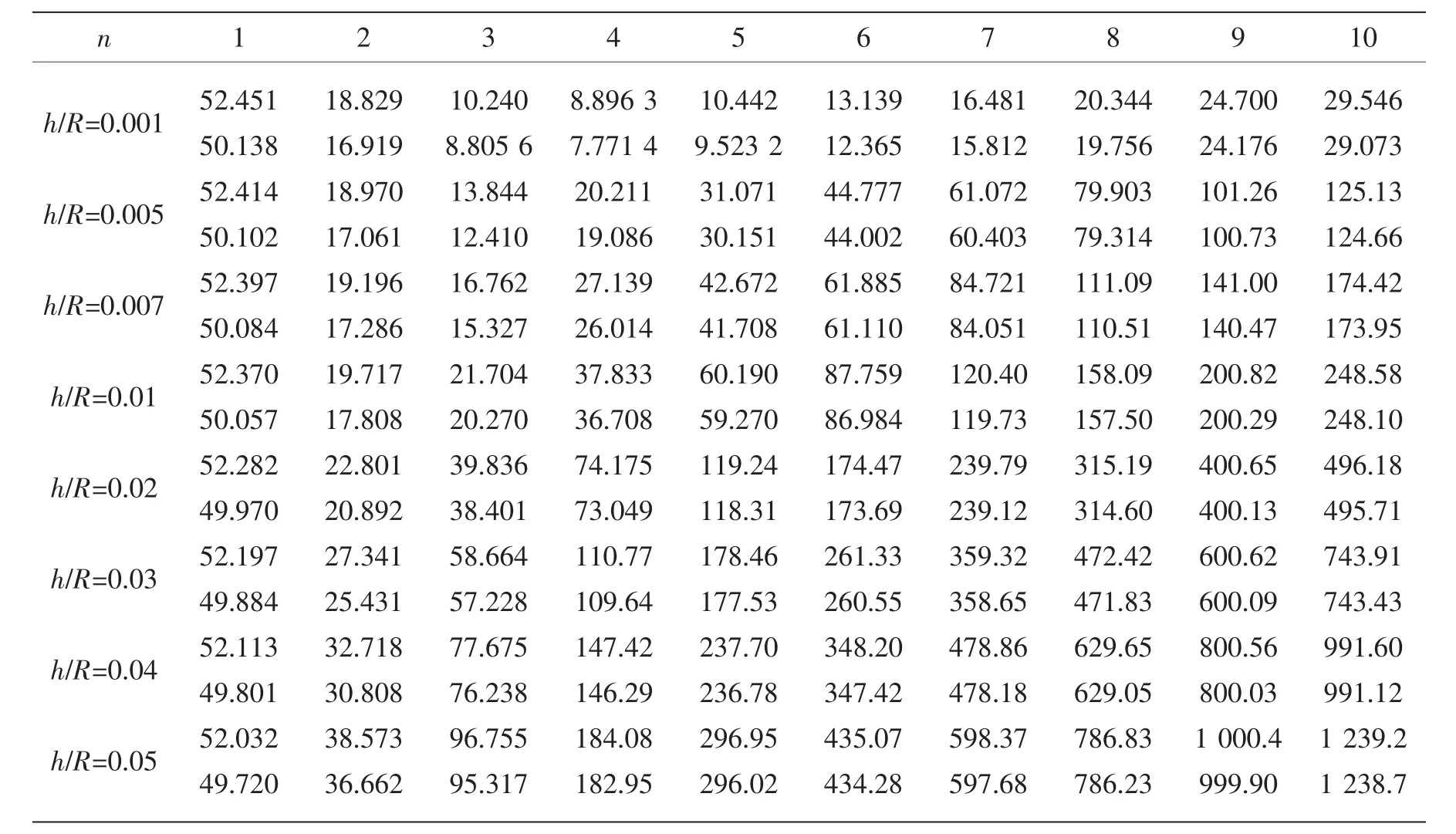
Tab.6 Natural frequencies(Hz)for FG rotating cylindrical shell against h/R ratios(m=2,N=1,L/R=20,Ω=10 rad/s )
The natural frequencies for FG rotating cylindrical shells under different rotating speeds Ω(rad/s)against L/R ratios are presented in Fig.2.Results given in the figure are obtained by setting h/R=0.002,m=2,n=2 and N=1.As can be seen from the diagram,the natural frequencies reduced with the increasing of L/R ratios.
The natural frequencies for FG rotating cylindrical shell under different rotating speeds Ω(rad/s)against h/R ratios are shown in Fig.3,by setting L/R=20,m=2,n=2 and N=1.The natural frequencies increased with the increasing of h/R ratios.When h/R≥0.01,the change of frequency is more significant.It means that rotating speeds Ω(rad/s)have more influence than thickness/radius ratio at high h/R ratios.The natural frequencies of the forward waves are bigger than those of the backward waves.The difference between two frequencies increased with the increasing of rotating speeds Ω(rad/s).
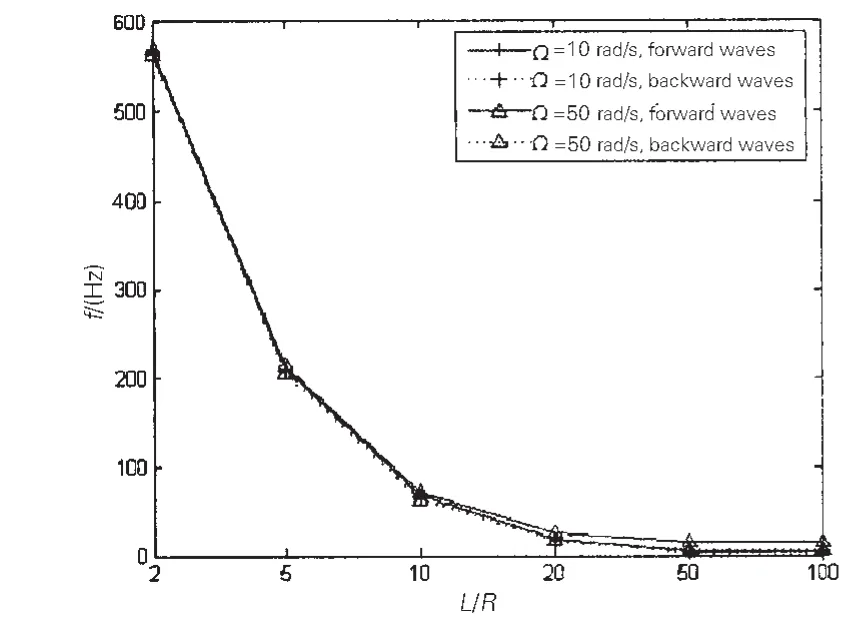
Fig.2 Natural frequencies(Hz)against L/R ratios
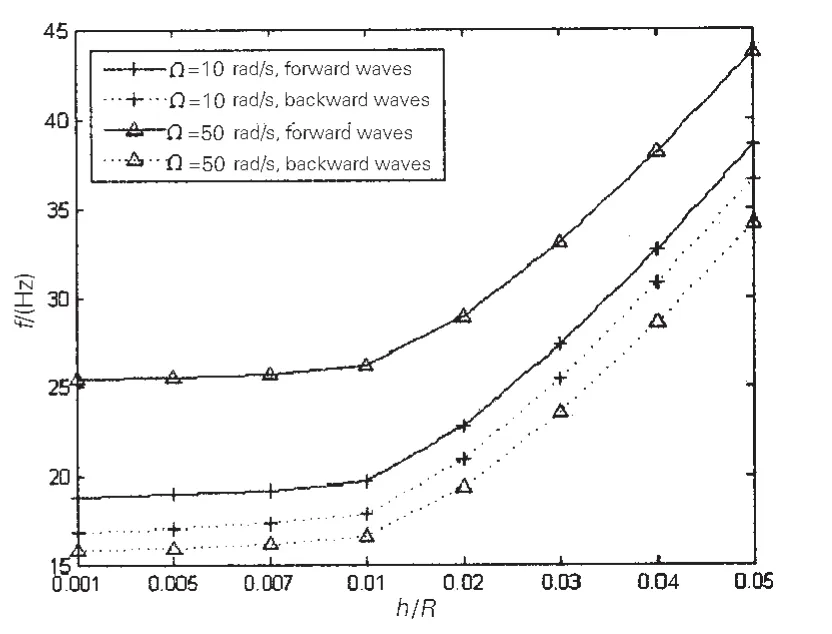
Fig.3 Natural frequencies(Hz)against h/R ratios
The natural frequencies for FG rotating cylindrical shells against material components are given in Tab.7.As can be seen,the effect of material components on the natural frequencies is not obvious.The natural frequencies for FG rotating cylindrical shell against material components first decreased and then increased monotonically.The minimum frequency appeared in n=2.The natural frequency reached the maximum value when material components are Aluminum and Zirconia.On the contrary,the combination of Ti-6Al-4V and Nickel got the minimum frequency.

Tab.7 Natural frequencies(Hz)for FG rotating cylindrical shell against material components(m=1,N=1,h/R=0.002,L/R=20,Ω=10 rad/s )

Continue 7
Fig.4 describes the natural frequencies for FG rotating cylindrical shell with different boundary conditions,and the parameters of the shell are defined as m=1,n=1,N=1,h/R=0.002 and L/R=20.As shown in this figure,boundary conditions have considerable effect on the natural frequencies.Relative to the C-F and S-S,the natural frequencies with C-C boundary condition are the biggest.
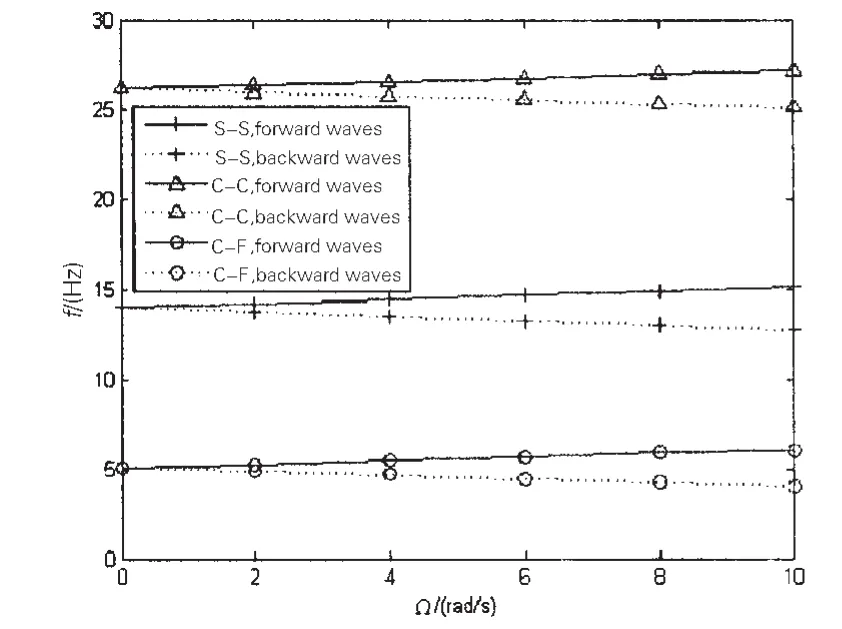
Fig.4 Natural frequencies(Hz)against boundary conditions

Fig.5 Vibration mode curve
Lastly,the results about membrane force and flexural force vary with x/L are shown in Fig.5.It shows the vibration mode curve of FG rotating cylindrical shell under five boundary conditions,for m=1.By substituting α and biinto axial beam function,the curves can be derived.Meanwhile,compared with other boundary conditions,the curve shape of C-F ends and F-S ends have completely different concavity and convexity because of their free end.Figs.6-7 describe that the force is bigger at ends and the midpoint of the shell,the membrane force is larger than the flexural force.

Fig.6 The membrane force along the x axis
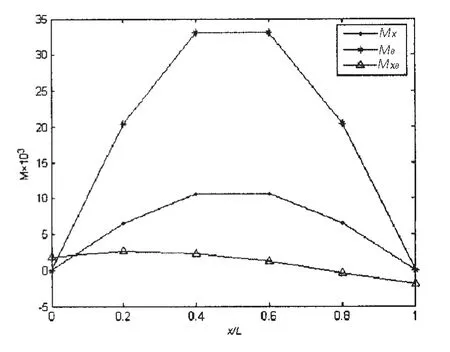
Fig.7 The flexural force along the x axis
6 Conclusions
The effects of various factors on the vibration of rotating FG cylindrical shell are investigated in this paper,some conclusions can be drawn:
(1)Circumferential wave number n,axial wave number m and thickness/radius ratio h/R have considerable effects on the natural frequencies.The natural frequencies increased with the increasing of the factors.
(2)The influences of length/radius ratio L/R on the natural frequencies are obvious.For 0.2≤L/R≤2,the natural frequencies reduced with the increasing of circumferential wave number n.For L/R≥5,the natural frequencies first decreased and then increased with circumferential wave number n.For L/R≥100,the natural frequencies increased gradually.
(3)The natural frequencies of the forward waves are bigger than those of the backward waves.The difference between the natural frequency of forward wave and backward is increasing with the increasing of rotating speeds Ω(rad/s).
(4)The influence of volume fraction on the natural frequencies is not obvious.The effect of material components on the natural frequencies is not obvious.In this paper,the natural frequency reached the maximum value when material components are Aluminum and Zirconia.On the contrary,the combination of Ti-6Al-4V and Nickel got the minimum frequency.
(5)Boundary conditions have considerable effect on the natural frequencies.Relative to the C-F and S-S,the natural frequencies under C-C boundary condition are the biggest.
(6)The membrane force is larger than the flexural force.
[1]Zhang X M.Parametric analysis of frequency of rotating laminated composite cylindrical shells with the wave propagation approach[J].Computer Methods in Applied Mechanics and Engineering,2002,191:2029-2043.
[2]Li H,Lam K Y.Frequency characteristics of a thin rotating cylindrical shell using the generalized differential quadrature method[J].Im.J.Mech.Sci,1998,40(5):443-459.
[3] Ömer Civalek,Murat Gürses.Free vibration analysis of rotating cylindrical shells using discrete singular convolution technique[J].International Journal of Pressure Vessels and Piping,2009,86:677-683.
[4]Xiang S,Li G C,Zhang W,Yang M S.Natural frequency of rotating functionally graded cylindrical shells[J].Applied Mathematics and Mechanics,2012,33(3):332-341.
[5]Lam K Y,Loy C T.Analysis of rotating laminated cylindrical shells by different thin shell theories[J].Journal of Sound and Vibration,1995,186(1):23-35.
[6]Li H.Influence of boundary conditions on the free vibrations of rotating truncated circular multi-layered conical shells[J].Composites:Part B,2000,31:265-275.
[7]Lam K Y,Wu Q.Vibration of thick rotating laminated composite cylindrical shells[J].Journal of Sound and Vibration,1999,225(3):483-501.
[8]Liu Y Q,Qin Z Y,Chu F L.Vibration characteristics of rotating thin cylindrical shells for various boundary conditions[J].J Tsinghua Univ(Sci&Tech),2012,52(1):5-9.
[9]Pradhan S C,Loy C T,Lam K Y,et al.Vibration characteristics of functionally graded cylindrical shells under various boundary conditions[J].Applied Acoust,2000,61(1):111-129.
[10]Loy C T,Lam K Y.Vibration of cylindrical shells with ring support[J].International Journal of Mechanical Sciences,1997,39(4):455-471.
[11]Loy C T,Lam K Y,Reddy J N.Vibration of functionally graded cylindrical shells[J].International Journal of Mechanical Sciences,1999,41(3):309-324.

